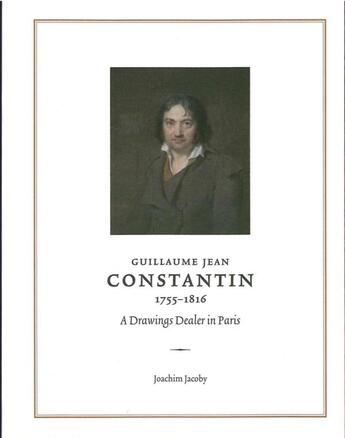-
Date de parution : 08/02/2019
-
Editeur :
Belles Lettres
-
EAN : 9781912168125
-
Série :
(-)
-
Support :
Papier
Résumé:
In the course of the 18th century, drawings by old and contemporary masters became an esteemed collectors' item and, in consequence, a highly valued commodity of the art market. This study looks at this business from the perspective of the art dealer Guillaume Jean Constantin (1755-1816), who... Voir plus
In the course of the 18th century, drawings by old and contemporary masters became an esteemed collectors' item and, in consequence, a highly valued commodity of the art market. This study looks at this business from the perspective of the art dealer Guillaume Jean Constantin (1755-1816), who was active in Paris during the last quarter of the 18th and the first years of the 19th century.
Constantin's transactions are reconstructed on the evidence of his dealer's mark applied to drawings - here identified for the first time - and unpublished material drawn from archives in Paris. His dealership in drawings is analysed with a focus on his business network within France and his far-reaching contacts, which also covered other regions of Europe, including England, Italy, Germany and Russia. Due to a particlularly rich documentation, his relationship with Johann Friedrich Städel, a Frankfurt collector and founder of the eponymous institute, can be described in detail. Other aspects of Constantin's multi-faceted activities were his work as an expert in estate evaluation, as an auctioneer and as a print publisher, including in 1794 the publication of the famous portrait of the revolutionary hero Jean-Paul Marat after a design by Jacques-Louis David. He also served as paintings curator to Empress Joséphine, Napoleon's wife. Working in proximity to the contemporary art world, he promoted living artists, among them his close friend Pierre-Paul Prud'hon.
Constantin's working life spanned the period between the French Revolution and the Empire, established under Napoleon. His changing allegiances are to be seen against this historical background.
This handsomely produced book is published by Ad Ilissvm in a new series, The Fondation Custodia Studies in the History of Art, which reflects and continues forward into the present the scholarly interests of the institution's founder, Frits Lugt. The next book in the series, prepared by Jean-Paul Bouillon, will publish a previously unknown collection of letters, recently acquired by the Fondation Custodia, by Édouard Manet to his friend the painter and printmaker Félix Bracquemond.
Donner votre avis








